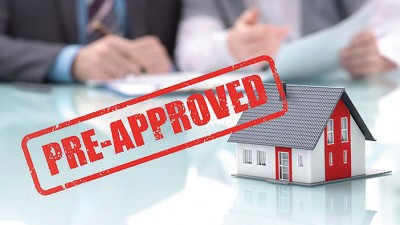
While shopping for a home may be pleasant, serious buyers need to start the process in a lender’s office, not an open house – and by obtaining a mortgage pre-approval. This process, basically an evaluation that determines whether the borrower qualifies for a loan, is important for several reasons.
First and foremost, in today’s real estate market, most sellers expect buyers have a pre-approval, and may only negotiate with people who have proof that they can obtain financing. Second, would-be homeowners learn the maximum amount they can borrow. They can also have an opportunity to discuss financing options and budgeting with the lender. Finally, if there is any problem with their credit, they’ll get a heads-up about it.
Pre-qualification Vs. Pre-approval: What’s The Difference?
Although they sound alike, being pre-qualified for a loan is not the same thing as being pre-approved.
Ralph Waldo Emerson, American essayist and poet, once said that the future belongs to those who prepare for it. This is sage advice for homebuyers who need to lay the necessary groundwork to buy the home of their dreams.
Pre-qualification is the initial step in the mortgage process, and it’s generally fairly simple. To pre-qualify for a mortgage, you meet with a lender (though the procedure can also be done over the phone or on the internet), and provide information about your assets, income, and liabilities. Based on that information, the lender will estimate roughly how much money you can borrow. The entire process is informal. It can be useful as an estimate of how much you can afford to spend on a residence, but because it’s a quick procedure and based only on the information you provide to the lender. Your pre-qualified amount is not a sure thing; it’s just the amount for which you might expect to be approved. For this reason, being a pre-qualified buyer doesn’t carry the same weight as being a pre-approved buyer who has been more thoroughly investigated.
Without proper preparation, many buyers get lulled into the mistaken notion that if a lender pre-qualifies them for a mortgage this means that they have been pre-approved for a home loan. Unfortunately, there’s a world of difference between these two terms. If you’ve ever been confused by the two, we’ll bring you up to speed on how these terms differ – and why a misunderstanding can mean disaster for borrowers.
With pre-approval, the lender checks your credit and verifies your financial and employment information and documentation; this not only confirms your ability to qualify for a mortgage but approves a specific loan amount (usually for a particular period, such as 90 days).
How to Get Pre-Approved
As you might suspect, the pre-approval process is more formal and involved. You’ll complete an official mortgage application (and usually pay an application fee), and then supply the lender with the necessary documents to perform an extensive check on your financial background and current credit rating. (Typically at this stage, you will not have found a house yet, so any reference to “property” on the application will be left blank.) From this data, the lender can tell you the specific mortgage amount for which you are approved. You’ll also have a better idea of the interest rate you will be charged on the loan and, in some cases, you might be able to lock in a specific rate.
“No verification” or “no documentation” loans are a thing of the past. The document requirements for mortgage pre-approval vary by lender and your individual circumstances, but typically, you’ll need to provide paperwork that shows your income, your assets, and any regular commitments against your income
The Skinny on Pre-Qualified
Getting pre-qualified is the initial step in the mortgage process, and it’s generally fairly simple. You supply a bank or lender with your overall financial picture, including your debt, income, and assets. After evaluating this information, a lender can give you an idea of the mortgage amount for which you qualify. Pre-qualification can be done over the phone or online, and there is usually no cost involved. Loan pre-qualification does not include an analysis of your credit report or an in-depth look at your ability to purchase a home.
By Ruben Gurgov
Mortgage Pre-Approval: Understanding The Process
Typography
- Smaller Small Medium Big Bigger
- Default Helvetica Segoe Georgia Times
- Reading Mode

